Singapore is taking bold steps to establish itself as a global hub for digital asset innovation and collaboration. Primarily, its central bank, the Monetary Authority of Singapore (MAS), is seeking to shape the development and application of distributed ledger technology (DLT) and tokenised assets to transform financial transactions, especially in facilitating safe, efficient and low-cost retail, wholesale and cross-border payments.
In 2021, investments in Singapore’s fintech industry that is heavily focused in digital asset innovation hit $3.9 billion, mainly through a combination of private and public sector collaborations and ecosystems, more than four times the $0.9 billion invested in 2019.
Dante Disparte, chief strategy officer and head of global policy at Circle, a US-based digital financial services provider and issuer of USDC, the US dollar and treasuries-backed stablecoin, said: “MAS as a regulator has always taken a thoughtful approach around public-private partnerships and trialling lighthouse projects with different technologies.”
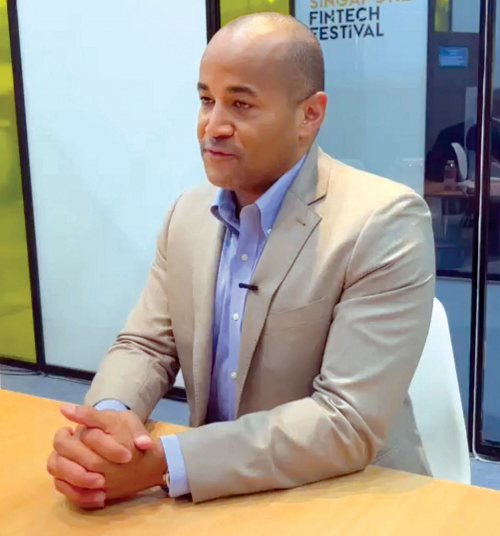
Dante Disparte, chief strategy officer and head of global policy, Circle
He added: “The depth and breadth of the ecosystems that are increasingly calling Singapore home for their operations, building across companies and partners, is very much alive and well.”
Circle was recently granted an in-principle licence to operate as a major payments institution in the country. Disparte commented: “This not only vindicates Circle’s decision to make Singapore our regional operating hub for Asia Pacific, but it also sends a signal to the world that where regulators and industry collaborate on a principled basis for regulating digital assets and payment stablecoins, eventually, you can cross the starting line to getting appropriate licences for these activities. It also sends an important signal that the payment stablecoin is closer to electronic money, banking and payments activities, as opposed to capital markets or securities-related activities.”
At the Singapore Fintech Festival in early November 2022, Ravi Menon, managing director of MAS, spelled out key areas and outcomes that the regulator looks to achieve, namely, enabling instant remittance, atomic settlement of financial transactions, tokenised assets as a medium of exchange and programmability of digital money, including securely backed stablecoins.
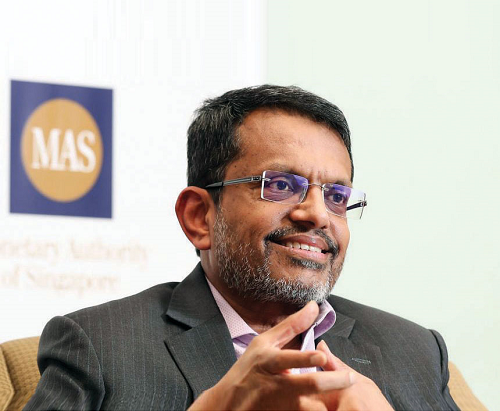
Ravi Menon, managing director, MAS
Enabling instant remittance
The prevalence of real-time payment systems in recent years has made payment flows in many countries increasingly efficient, convenient and seamless. In fact, the Bank for International Settlement (BIS) in its 2022 annual economic report acknowledged that the pervasiveness and maturity of real-time domestic payments has enabled access to efficient, low-cost instant payments to a larger proportion of the population previously underserved by mainly bank-owned and operated payment systems.
The BIS envisages a two-tiered monetary system that combines central bank digital currencies (CBDCs), predicated on the public’s trust in central banks and fast payments systems that could enhance efficiency, financial inclusion and data privacy. The interlinking of these domestic faster payment schemes can also provide similar levels of improvement for cross-border payments, in line with the G20 roadmap for enhancing cross-border payments.
Hyun Song Shin, economic adviser and head of research of the BIS, wrote: “Recent advances in wholesale and retail CBDCs and retail fast payment systems could form the basis of an adaptable future monetary system that fosters private sector innovation, while enabling greater financial inclusion and user control over data.
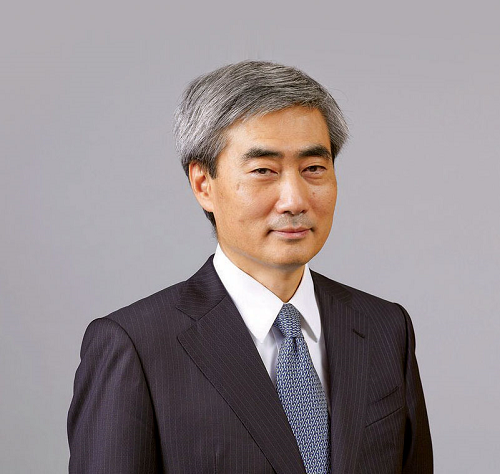
Hyun Song Shin, economic adviser and head of research, BIS
“Innovation is not just a buzzword or latest fashion. It should never lose sight of the concrete needs of users in the real economy. Central banks are seeking to push the frontiers of what is possible, adopting new capabilities while ensuring financial services are stable and interoperable domestically and internationally.”
Cross-border payments have erstwhile been affected mainly via telegraphic transfers supported by a network of correspondent banks through Swift, the international financial messaging platform. Such transfers remain slow, costly, and opaque due to the number of intermediary banks involved. A transfer could take up days to complete and the World Bank estimates the average cost of a transaction to be about 6% of the transfer value.
Swift is working to improve speed and traceability of transactions with the introduction of the global payment initiative (gpi) that mandates a common set of processes such as pre-payment validation and universal confirmation, and standards such as ISO 20022, to expedite end-to-end processing and tracking of transactions. By leveraging domestic real-time payment systems, Swift extended the capability of gpi into ‘gpi instant’ that promises faster and more seamless cross-border payments, and Swift Go for low value retail transfers. However, greater adoption and transition to gpi by the wider Swift community, especially institutions with legacy systems, remains a challenge.
Other global initiatives to resolve the current friction in cross-border payments include the interlinking of countries’ real-time payment systems to allow users to access them directly. Singapore has been working to connect its PayNow and Fast And Secure Transfers (FAST) payment system with the faster payment systems of other countries, such as Thailand’s PromptPay in 2021, claimed to be the first in the world. Singapore is also in the process of completing linkages with India’s Unified Payments Interface (UPI) and Malaysia’s DuitNow.
However, such bilateral arrangements are time and resource consuming, and often complex to complete as they involve significant technical and policy coordination between operators in different jurisdictions, especially in the areas of data privacy and security, sanctions screening and capital controls. Such complexities increase with more countries participating in the payments network.
To overcome this, BIS Innovation Hub created Project Nexus, a multilateral arrangement to link countries’ real-time payment systems through application programming interfaces. Each country only needs to link its real-time payment system to the Nexus gateway once to connect directly to other countries in the network. In addition, Nexus integrates payments, foreign exchange (FX) conversion and message translation as well as compliance into the entire cross-border payment process.
Menon believes that ASEAN shared vision of establishing a common multilateral regional payment network by 2025 can be achieved through Nexus, saying: “Project Nexus can be a key enabler towards realising this vision. ASEAN is well placed to be a first mover on this multilateral solution. In fact, as this network expands, we hope to see more countries coming on board as we build connectivity from ASEAN to the rest of the world.”
Atomic settlement of financial transactions
Beyond real-time cross-border payments, MAS is also actively exploring and testing real-time cross-border settlement solutions.
Menon explained that while the interlinking of different domestic real-time payment systems addresses the instant cross-border payment problem, it does not solve the settlement problem. Though accounts of the payer and payee may be instantly debited and credited based on instructions transmitted through the network, the actual funds do not move between the banks instantaneous, especially when it involves many intermediary banks and general ledgers, and could take two to three days to complete.
Menon noted: “This potentially creates multiple points of failure and higher costs. We want a real-time settlement system that is strong and secure. We want atomic settlement, the simultaneous exchange of two linked assets in real-time that eliminates settlement risk, duplicative reconciliation, and the need for large pre-funding accounts.”
Atomic settlement will benefit wholesale financial transactions between banks and financial institutions, such as cross-currency FX and securities trading.
MAS believes the best way to achieve atomic settlement is through the simultaneous exchange of tokenised assets on a distributed ledger. MAS has been experimenting since 2016 to test its feasibility with Project Ubin, exploring the use of blockchain and DLT for clearing and settlement of payments and securities. It found that tokenised assets in the form of digital currencies and securities assets could be exchanged digitally and simultaneously to effect final settlement and delivery-vs-payment. Banks were paying each other directly without going through a central intermediary, with decentralised netting of payments, and within the stipulated level of transaction security and privacy.
This led to Partior, a joint venture among DBS Bank, JP Morgan, and Temasek, that seeks to commercialise the blockchain-enabled multi-currency clearing and settlement platform that promises to dramatically reduce settlement time for Singapore dollar and United States (US) dollar transactions from days to seconds.
Next, MAS is expanding Project Ubin into a global initiative, called Project Ubin+, to facilitate cross-border exchange and settlement of foreign currency transactions using wholesale central bank CBDCs. This is an ambitious and strategic study for MAS to work with international partners to explore solutions, including business models, governance structures, policy guidelines and operational standards to manage risk and implement atomic settlement using digital currency infrastructures across DLT and non-DLT platforms.
MAS is also working with the central banks of France and Switzerland, and the BIS Innovation Hub to explore the exchange and settlement of wholesale CBDCs and digital assets with an automated market maker, using smart contracts.
Claudine Hurman, director of infrastructures, innovation, and payments at Banque de France, explained: “Since 2020, blockchains have improved in safety, resilience, scalability and performance. Our roadmap is to improve interoperability between different DLTs, and between current legacy and DLT systems. The other aspect is to improve cross-border payments, which is an important part of the G20 roadmap. We are keen to see how we can contribute with CBDCs. So far, we have tested, for example, remittances using CBDC that has proven successful through specific experiments like the Eurosystem Project.”
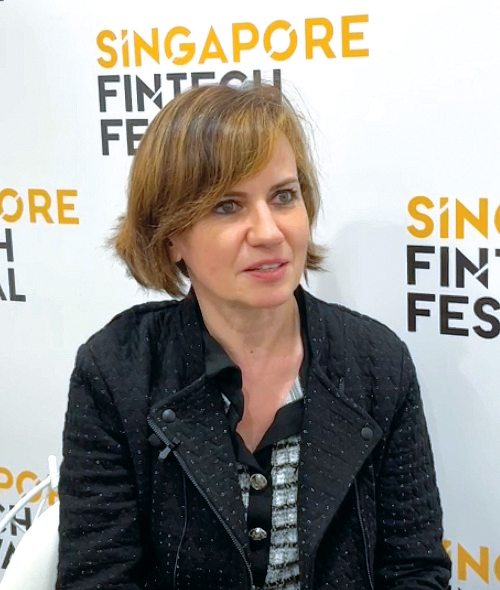
Claudine Hurman, director of infrastructures, innovation, and payments, Banque de France
MAS has also joined the BIS Innovation Hub and other central banks, namely, Reserve Bank of Australia, Bank Negara Malaysia, and South Africa Reserve Bank, in Project Dunbar to develop open-source DLT platforms for international settlements using wholesale CBDCs.
With Swift, MAS is exploring the interoperability of instant cross-border payment and settlement across DLT-based systems and current payment infrastructures.
Tokenised assets as a medium of exchange
MAS believes that the real innovation in blockchain technology lies in the tokenisation of digital assets. Through Project Guardian, MAS is working with the financial industry to lay the structures and protocols to harness the potential of tokenised assets and decentralised finance (DeFi), where financial activities can be automated through smart contracts, while managing the associated risks of operating in an environment without central counterparties and trusted regulated entities that are accountable for proper conduct of trading activities.
Naveen Mallela, global head of coin systems at JP Morgan, elaborated: “Project Guardian is about bringing about asset tokenisation, cash tokenisation, fractionalisation and DeFi into transforming capital markets, to improve liquidity in what are traditionally illiquid assets, to remove settlement risk and improve price discovery.”
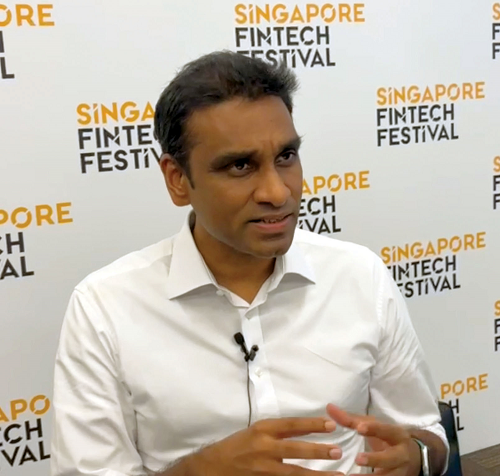
Naveen Mallela, global head of coin systems, JP Morgan
MAS aims to build interoperable networks to trade digital assets across multiple venues, with regulated financial institutions entrusted to screen, verify and certify participants to trade, creating common pools of digital assets that can be exchanged directly without intermediaries. It will also develop security and compliance measures to mitigate against fraudulent transactions and operational risks. The benefits are mainly from the reduction of costs associated with intermediaries and managing counterparty trading relationships.
In the project, DBS Bank, JP Morgan and SBI Digital Asset Holdings transacted in FX and government bonds that were tokenised.
Mallela added: “What makes this very exciting for us at JP Morgan is, this is the first time that tokenised deposits have been launched. While stablecoins and CBDCs garner a lot of attention, we believe that the future of money is going to be commercial bank money. And they’re going to manifest in the form of tokenised deposits coupled with identity and credential solutions.
“The ability to do FX, payment vs payment across counterparties, cross-border payments, you are no longer going through a complex web of accounts and liquidity at each point; with tokenised deposits, you start doing peer to peer. All of this ultimately will dramatically-in our minds at Onyx-reduce the need for collateral liquidity capital. And that is where all of your cost efficiencies are going to come from. We estimate the cost reductions to be of the order of magnitude of over $100 billion, if you think about the overall size of cross-border trade of about $23 to $24 trillion and counting.”
Project Guardian also launched new pilots to develop new tokenised assets, for example, Standard Chartered is experimenting with tokens linked to trade finance, while HSBC and UOB are exploring the tokenisation of wealth management products. MAS believes such projects will contribute to future financial market innovations.
Menon affirmed: “We want to create a future where any asset can be fractionalised, no market is too big to access, trading costs are drastically reduced, and trust can be established with greater transparency and better accountability.”
Programmable digital money
The next area in MAS’ vision of financial market innovation is in the very transformation of money itself, specifically, to make money programmable. Given the prevalence of digital money today, vast amounts of deposits sit in commercial banks and the banking system, accounting for 92% of money supply in Singapore.
Singapore sees benefits in making money programmable, by embedding rules and conditions in it to define its usage, for example, for what purpose and for how long, even when it is transferred. It also calls it purpose-bound money (PBM). Digital money and assets can be tokenised and put onto a distributed ledger as a programmable smart contract.
MAS sees three viable options for programmable digital money, namely stablecoins that are securely backed versions of cryptocurrency with a stable value, tokenised bank deposits, and CBDCs.
For retail payments, unlike BIS that promulgates the use of CBDCs in a two-tiered system, MAS appears to lean towards regulated and securely backed stablecoins for their combination of stability and programmability, although their current take-up remains less prevalent. It also seems to favour tokenised bank deposits that are digital representations of commercial banks’ deposits for financial markets and securities trading applications for the purchase and sale of digital assets that circumvent the banking system.
Meanwhile, MAS has ruled out issuing a retail Singapore dollar CBDC for now. In its report, A Retail Central Bank Digital Currency: Economic Considerations in the Singapore Context, the central bank saw no urgent need for one given the prevalence and efficiency of commercial bank digital money. It also dismisses the use of cryptocurrencies for payments due to the volatility in their value and proclivity to be used for speculative and fraudulent activities. It also actively discourages retail cryptocurrency investment.
However, it is looking to support stablecoins with proper regulation, promote tokenised bank deposits for atomic settlement, and continue to experiment with CBDCs, especially for wholesale applications.
To this end, MAS had published two consultation papers, one to propose regulations to protect consumers from the risks of trading cryptocurrencies, the other to regulate stablecoins and tokenised assets issued in Singapore to meet minimum standards on surety of their value in terms of the quality of backing, redemption at par, and base capital.
Circle’s Disparte welcomed principle-based regulation of stablecoins that will foster innovation. He commented: “The reason we have payments and banking innovations and global payment rules is because of rules-based public-private partnerships such as Swift, automated clearing houses for cheques and electronic payments. All of these types of networks emerged as first private-sector innovations. And later they became regulated networks for the transmission of value. The way payments stablecoins like USDC are being regulated will end up in a very similar state of rules-based, responsible fundamental protections baked into the operations, that are additive to banking, not disruptive to banking.
”MAS launched Project Orchid to test the concept of programmable money or PBM, using a Singapore dollar backed stablecoin, that will enable senders to insert conditions on the use of a digital Singapore dollar by the recipient. Interestingly, in testing PBM, the central bank remains open to leveraging its learnings and knowledge to build the foundational technology infrastructure and technical competencies to issue a retail CBDC at some point in the future.
Aymeric Salley, co-creator and head of StraitsX, a payment service provider that issues the XSGD Singapore dollar stablecoin and a key participant of Project Orchid said: “We operate in three DLT ecosystems: Ethereum, Zilliqa, and Polygon. We are part of Project Orchid to provide the underlying Singapore dollar stablecoins to the commercial vouchers (or vendors?). We’ve been partnering with Grab and 12 other partners. And the goal is to pioneer, with the collaboration of MAS and a number of institutional players, purpose bound money, that is essentially money that comes with conditions. We apply conditions to money. An example of a condition could be an expiry date (money that has an expiry date), or money that can only be spent at certain merchants. And, the sky’s the limit, in terms of the number of conditions we can think about.”
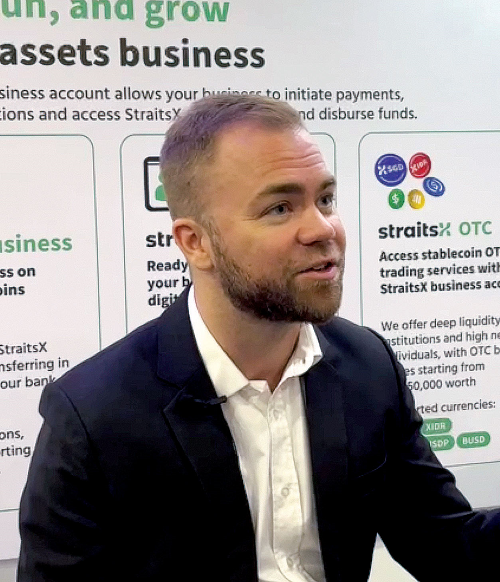
Aymeric Salley, co-creator and head, StraitsX,
He added: “The goal of this commercial pilot has been to demonstrate what open-source infrastructure can drive in terms of cooperation. We decided to make it as open as possible, and as interoperable as possible. Within the first two months, we managed to get together 14 different partners.
“Polygon is providing the network that enables fast and cheap settlement, which is a must for our payment business. We’ve demonstrated interoperability, notably, from the wallet-provider side. There are three different wallet providers. And there could be more because we’re all adopting the same standard. Similarly, for payment collection, we are working with three different payment collection companies: TripleA, Fomo Pay, and BTC. Essentially, to demonstrate that you can work with any wallet, any payment collection company. This is an interoperable system that can be deployed at scale very rapidly.”
Challenges remain
Banque de France’s Harman warned that the move to digital assets and DLT will take a progressive path and will not be a big bang. She said: “There are still a lot of things to address. One is probably finding the right (common) standards, because if you have fragmented or different standards, you need to try to have connection (interoperability). Resilience is very important, especially in these days where you have cyber-risks everywhere. You have to make sure that DLT will be secure, and scalable.”
The other issue pertains to data privacy. Harman noted: “Data privacy is a very sensitive issue, we have the general data protection regulation, that protects the data of the citizens, and is very stringent, and it probably would have to be amended for retail digital Euro to have information on a need-to-know basis. The central bank would not need the details of the transaction. This is the job of the commercial banks because they do the anti-money laundering. And they do all the due diligence. The central bank just has to control the money issuance; it doesn’t need to know what the individual transactions are.”
She also talked about how the new Markets in Crypto-Assets (MICA) regulation to be enacted in Europe will incorporate DeFi. She explained: “There is a revision clause that will allow MICA to be revised to incorporate the developments of DeFi because it’s very early on this moment to regulate DeFi, but it’s really the idea to bring up the security, allowing innovation while framing it, not stifling it. It is early days yet.”


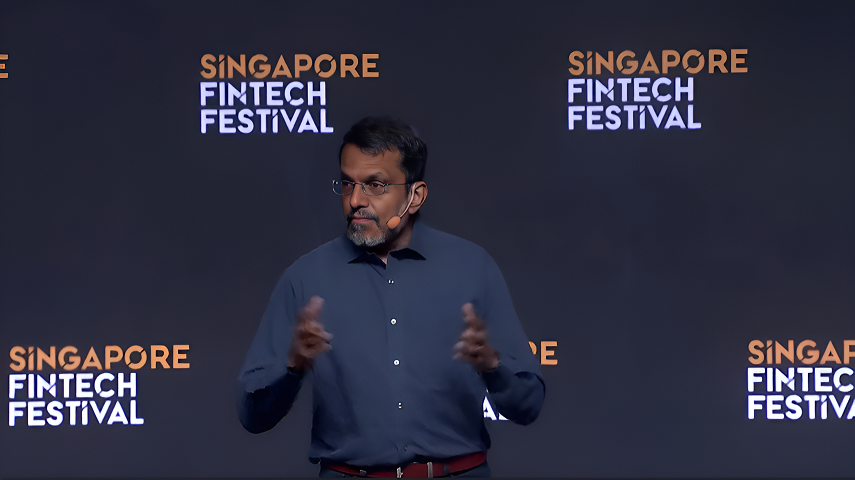

All Comments